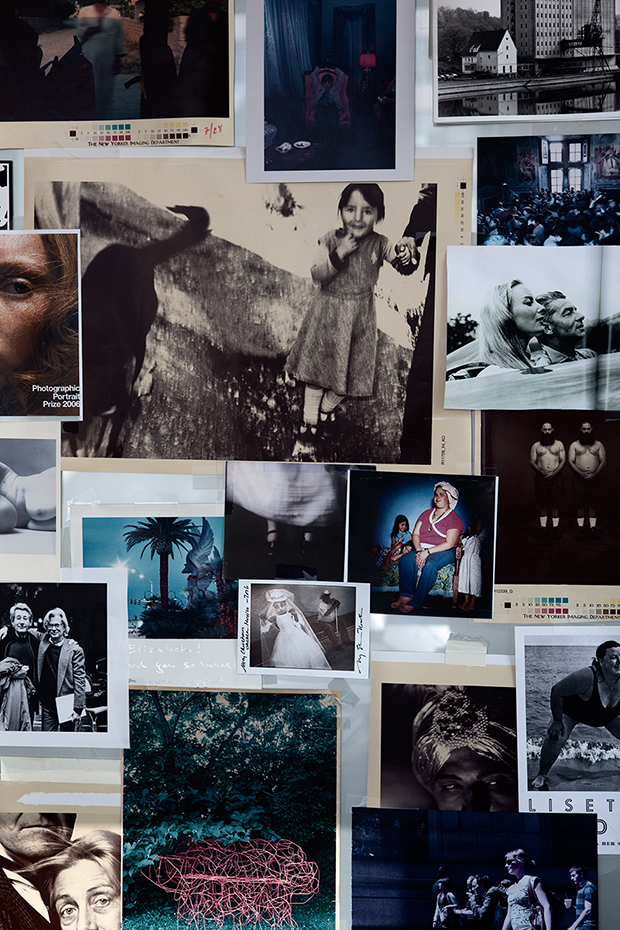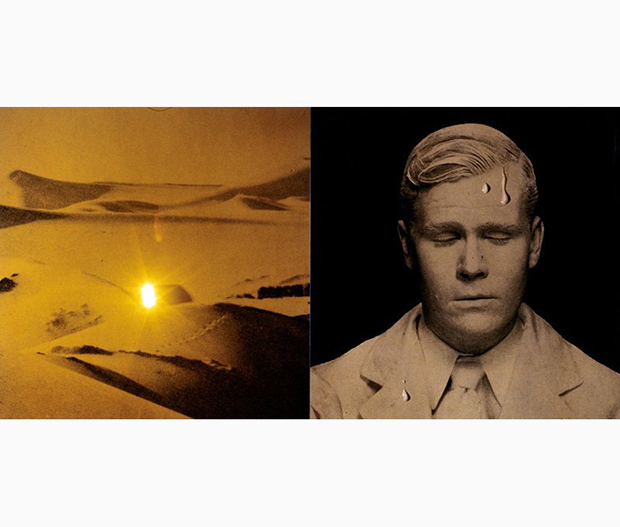This interview series is produced in partnership with MATTE Magazine, a publication produced by writer and curator Matthew Leifheit that focuses on the work of a single photographer per issue.
Stephen Frailey is a photographer, chair of SVA’s photography BFA program, and editor-in-chief of Dear Dave, an independent magazine that brings together any and all types of photography.
How did you start your magazine, Dear Dave?
I really felt there was a need for a magazine that focused on a diversity of work. Five years ago when I started it, Blind Spot and Aperture were the major American photography magazines. They both covered specific ideas: Blindspot was very conceptual, and Aperture had more of an emphasis on history. I thought there was another possibility. We just published Dear Dave’s 15th issue, which is on 15 photographers I thought were relatively unknown.
I’ve always been interested in photography as a very diverse medium. I think that’s one of its pleasures and one of its strengths, so I wanted to put together a magazine that had an equal interest in different genres (fashion photography, documentary, etc.) I also wanted to publish work by relatively unknown people. There are a lot of very talented people out there, but the field is very crowded.
Would you ever put yourself in Dear Dave?
No, I would never do that. I don’t approve of that kind of blatant self-promotion. Philip Gefter told me that Dear Dave really was a kind of self-portrait, as much about my sensibility and my work as anything.
Yeah, kind of like how the photos Elisabeth Biondi kept in her office at The New Yorker were called self-portraits by Vince Aletti in the piece you published in issue 10.
How is your position as head of photography at SVA related to your role as editor of the magazine?
Less than it did in the first couple of issues, where I emphasized people that were connected to this department. But now I just publish what I want to, which is a remarkable scenario. Of course I end up publishing more people that have a relationship to this department because it’s my job, but it’s not the agenda.
It does seem really diverse. Issue 10 had really hardcore photojournalism by Yuri Kozyrev and also fashion photographs by Daniel Sannwald. You run a grad department in fashion photography, right?
Right. That’s a new department, we’re in our third year. That was another example of a particular need. If you are a serious fashion photographer and you want to become involved in a graduate program, there’s no place for you.
I don’t know of any other graduate fashion photography programs.
You’d get rejected from any prestigious graduate program. It’s an old idea. It’s like the separation between church and state, between what’s considered commercial and what’s considered art practice. In the recent history of photography, there’s so much emphasis being placed on photography being a fine art, worthy of an art practice, that they’ve really segregated what’s considered to be commercial. I come from an art background, but I started to notice that the best fashion photography was very complex in terms of its cultural matrix, in terms of putting together very challenging narratives.
Vince Aletti was telling me something similar, that much of the best photography is in fashion magazines, but it’s overlooked in an art context.
It’s completely overlooked, but it’s copied. Fashion photography has influenced so much of art photography, in terms of constructing a narrative, but it’s not acknowledged. Film is acknowledged. When people talk about Gregory Crewdson, they will talk about how he’s been influenced by film. But not fashion. (You know, Vince is actually one of the instructors.)
What’s the fashion program like?
It’s a one-year program. I wanted to make something that was essentially half the price of an MFA program. There’s anxiety to produce work because it’s just a one-year program, but it’s been very successful. It has rearranged the way some people think about fashion.
The main emphasis is that in fashion, a lot of work ends up being middle of the road: There’s a lot of compromise involved because of the commercial aspect and other constraints. But out of the contemporary fashion photographers whose work we know, we know it because its eccentricity—there is room for more. Students don’t have to compromise.
So the students in that program are students who are already doing fashion work, but they want to develop their work conceptually.
Exactly. Because the program is so short, there’s no technical information except in the area of video. The program emphasizes video very much. We also do the NY Fashion Film Festival. Do you know about that?
It’s news to me! [Films screened at this year’s festival included a Roman Polanski short for Prada, a high-def slow-mo celebration of twerking called Grind, a whimsical butterfly garden by Ryan McGinley for Edun, and a stock photography watermarked Kenzo video by DIS.] How are you involved with the film festival?
I founded it. There’s a tremendous amount of creativity in the best fashion films that are being made right now. Every year we have it in New York, but it’s gone to different cities, too. I’m going to Korea next week. It’s also going to Mexico City, Moscow, and Istanbul.
Didn’t you tell me you were just in Oslo?
I was in Oslo last week for our SVA program called Photo Global, which brings in young photographers from around the world for a year here.
So everything you do informs the content in Dear Dave.
Yeah all these different things work together. But as the chair of the department and someone who teaches two classes, I have to make sure I’m not away that much.
You said you come from an art background? How did you get into photography?
Well, I am a photographer. I just had a website created but I haven’t told anyone about it: stephenfrailey.com. I studied painting in college. I went to Bennington, then came to New York and worked for Mary Boone for a few years. I showed at 303 and Julie Saul Gallery back in the day. And then I started doing magazine work. I thought it was a lot of fun, and I made a pretty decent living from it. I started teaching at SVA in 1983, in my early twenties, then became chair of the program 15 years ago.
So you’re also a practicing photographer.
I only make photographs in the summer. When I first got this job, I would go from work to my studio, and it didn’t work because this job requires so much concentration. So I go up to my farm upstate and start working June 15th.
Do you know Mossless Magazine?
Yes, I think Romke is amazing.
Romke, Grace and I were talking about advertisers. We [Mossless and MATTE] don’t have advertisers, and of course there are a couple good things about that, but it’s also that neither of us know how to even approach advertisers. So it’s impressive to me this independent photography magazine pays for itself.
Well, more or less. I charge $1,000 for a page, and $4,000 for the back cover. If I can make $20,000 on ads it covers the costs.
It seems like the ads in Dear Dave have to do with the content.
I really want to have fashion ads because they’re beautiful and lucrative; I didn’t want to have Nikon ads in the magazine. But I have to do a better job [at ads] because it costs some money to do this. Though it pretty much pays for itself at this point, it could stop doing that at any moment.
Print publication is a hard thing these days.
But clearly we both believe there’s a place for it.





{ 1 comment }
Great conversation! I never heard of Dear Dave before this interview, thanks for the knowledge. I’m looking forward to checking it out.
Comments on this entry are closed.